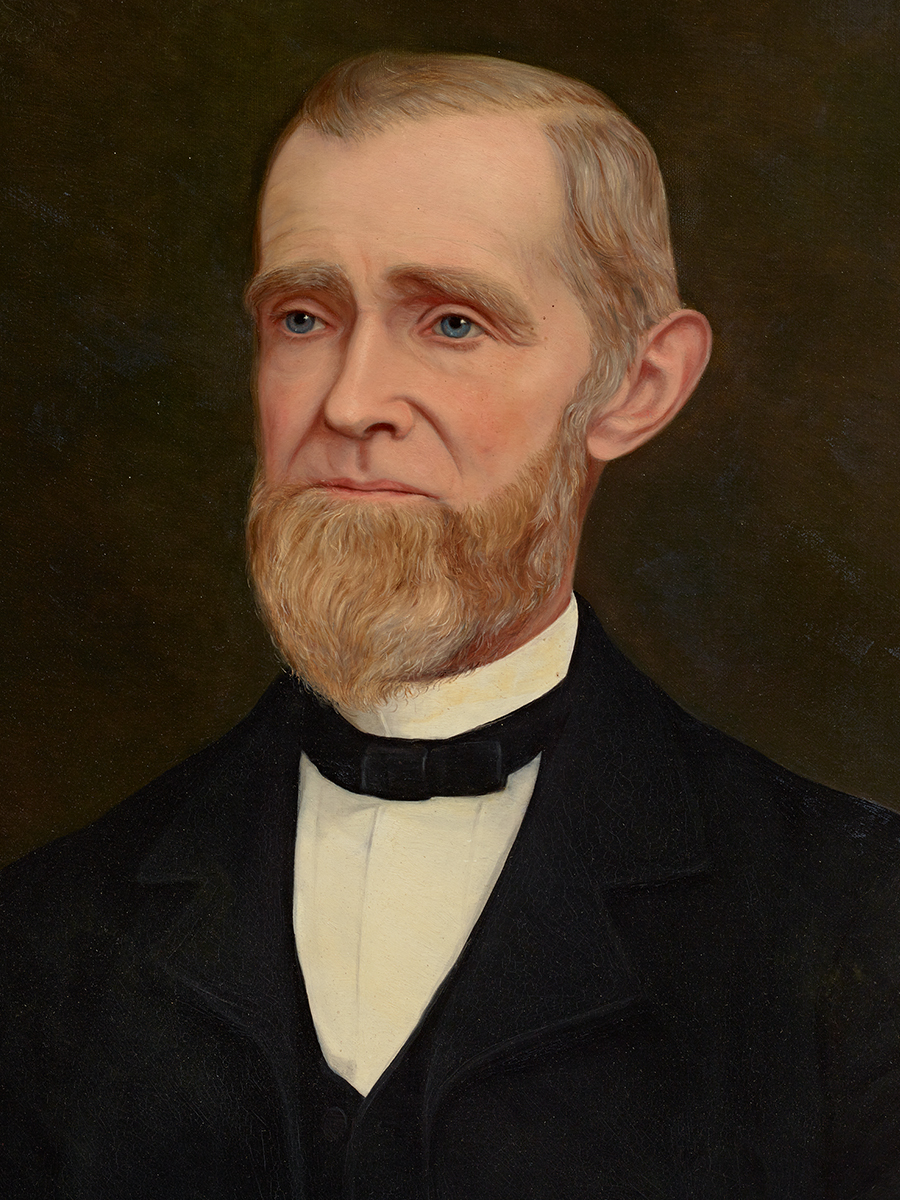H. W. Crabb
(1868 - 1899)
Hamilton Walker (H.W.) Crabb is widely recognized as one of the most significant pioneering winemakers in Napa Valley. In 1828, he was born as the eldest child to Henry Crabs and Esther (Walker) Crabs in Jefferson County, Ohio. (H.W. Crabs later changed his surname to Crabb.) His father Henry Crabs became a prominent blacksmith and relocated the family ca. 1840 to Adams County, Ohio, to help establish a Presbyterian congregation. Although Ohio was a prominent winemaking center in the early nineteenth century, the Crabs were not associated with the wine trade, as it has been previously theorized. (In fact, Henry Crabs’s brother John Crabs was described as a “radical prohibitionist” in an 1890 book on the history of the Upper Ohio Valley.)
Following the death of Henry Crabs in 1845, Esther Walker sold the family farm, and in 1853, H.W. Crabb traveled south to New Orleans and then west to California, in search of fortune in the Sierra Nevada gold fields. At some point, he changed his last name to Crabbs and was joined by his first wife Rebecca A. (Donohoo) Crabb and daughter Amanda H. Crabb. In 1853, he relinquished his quest for gold and moved to San Lorenzo in Alameda County. He purchased a 400-acre parcel of land adjacent to the pioneering orchardist John Lewelling, and the neighbors formed a lifelong friendship. Crabb experimented unsuccessfully with corn and planted an orchard within his San Lorenzo estate. Applying both his marketing acumen and leadership skills, he began exhibiting his fruit at local agricultural fairs as early as 1860 and served as member of the Alameda County Board of Supervisors. The Crabb family expanded with the arrival of daughter Adda Crabb and son Horace Crabb and then mourned the passing of Rebecca Crabb in 1862. Two years later, H.W. Crabb married Elizabeth P. Carmer, and they celebrated the birth of their first and only daughter Cora Crabb.
Shortly after the Civil War, H.W. Crabb and his family moved to the Oakville area and in 1868, he purchased 240 acres at the northwest corner of Highway 29 and Walnut Lane from Eugene L. Sullivan, the son-in-law of George Yount. At the time, the property contained only a ramshackle house and barn. Crabb began transforming his property into a model estate by constructing a new residence and planting a fruit and nut orchard, wheat and hay fields, and 70 acres of Muscat of Alexandria grapevines. He initially focused on producing sweet, flavorful table grapes and raisins and shipped his goods from the Oakville railroad station advantageously located at the southeast corner of his property.
In 1872, Crabb switched from table to wine grapes and christened his new winery Hermosa, which means beautiful in Spanish. In 1879, he also acquired the adjacent 119-acre parcel from the Yount family, increasing his estate to 359 acres. While statistics on vineyard acreage, number of vines, and gallons of wine and brandy produced varied over the next three decades, they indicate that he planted a significant portion of his property with grapevines, while reserving portions for his residence, winery complex, orchards, hay fields, and horse track. Crabb also became an ardent collector of grapevines, with approximately 180 varietals by the 1870s and 400 varietals by the end of the 1880s. Many considered it the largest collection of vines in the world. (While that may have been an optimistic claim, Crabb’s collection was certainly one of the largest in Napa Valley, if not the state.) With an annual production of approximately 200,000 gallons of wine, he joined the ranks of Charles Krug and Gottlieb Groezinger as a leading wine producer in the county.
In 1886, H.W. Crabb christened his estate To-Kalon, thereby abandoning the moniker Hermosa. As he confidently explained to journalist Frona Eunice Wait, “the name To Kalon is Greek and means the highest beauty, or the highest good, but I try to make it the boss vineyard.” Crabb’s To-Kalon wine won numerous awards at local, national, and European expositions, prompting Wait to describe him as “without a peer in the State” and the Chicago Herald to proclaim him the “Wine King of the Pacific Slope.”
Crabb expanded his To-Kalon estate to 527 acres in 1889 through the acquisition of a 168-acre parcel located to the south. The parcel was previously owned and cultivated by William Baldridge, who participated in the Bear Flag Revolt and Mexican-American War, which led to the transition of California from Mexico to the United States in the mid-nineteenth century. Baldridge was also a pioneer settler of Oakville, having acquired a land patent from the federal government in 1870 and building a residence and planting grapevines and other crops within his property shortly thereafter.
With boundless energy and expertise, Crabb wrote and spoke widely on viticultural topics, sold vine cuttings statewide, established a nationwide distribution network for his wine, experimented with rootstock resistant to phylloxera, and represented Napa County on the Board of State Viticultural Commissioners. He also bought and sold a handful of other parcels of land, retaining each for less than a month, and leased acreage south of Oakville. However, he never incorporated these extraneous parcels into his To-Kalon estate. In 1899, H.W. Crabb passed away, leaving behind a vast legacy as a pioneering viticulturalist and winemaker in Oakville.
